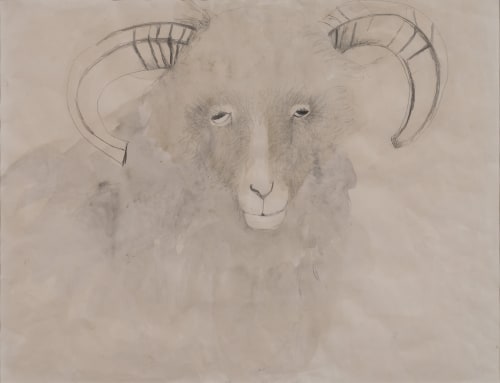Mary Newcomb was a British painter born in Harrow-on-the-hill in 1922. She lived in the countryside for her whole career and her work is famously centred in the rural way of life and the nature that is integral to it. Newcomb came to the world of art later on in life, though the same could not be said for her interest in nature. She took a degree in Natural Sciences at Reading University in 1943 and went on to teach science and mathematics at the high school in Bath.
In 1950, Mary married Godfrey Newcomb and moved to Norfolk. It was here that she began to paint. Though not naturalistic, her paintings strongly evoke the different atmospheres and personalities within her surroundings. The simplicity of her style gives her art immediacy. Though her work is lyrical, it is also thoughtful and unusual, offering unexpected views of everyday, rural moments. This trait is often further developed in the titles she gave her work - “Cows Affronted by Land Drains” for example, or “These Sheep Find it Necessary to Cross The Bridge”.
Newcomb’s first solo show was held at Crane Kalman in 1970 and the gallery has continued to mount regular exhibitions of her work since then. It was in association with the gallery that Christopher Andreae wrote a monograph on her work in 1996.
For a large part of her life, Newcomb’s paintings remained outside the world of the art establishment, indeed it was not until 1997 that The Tate acquired one of her pieces, “People Walking Amongst Small Sandhills”, for its collection. Regardless of her rise in recognition, Mary Newcomb’s style remained constant and her unique view on the world is immediately recognisable.
